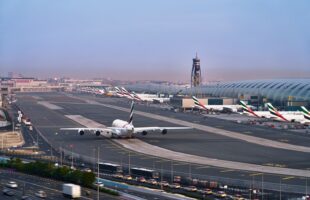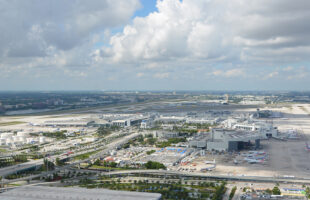Whether it was caused by Brexit, the American presidential election, or the hostilities in Syria, the spectre of economic uncertainty permeated the global economy and the aviation sector throughout 2016. The increased rhetoric about protectionist policies in some Western countries also threatens the trend toward increased air service liberalization, otherwise known as Open Skies.
Yet, aviation is characterized by its ability to adapt and recover from adversity irrespective of the event or circumstance. Microeconomic factors that are omnipresent across the industry, which include heightened competition with the increased presence of the low-cost business model among carriers coupled with historically low jet fuel prices, have acted as catalysts to stimulate demand through lower fare offerings. Since the end of the Great Recession in 2009/early 2010, global passenger traffic has risen 5.5 percent on an annualized basis; a testament to air transport’s resilience.
In 2016, the world in general and the industry in particular experienced terrorist attacks around the globe, including those at Istanbul Atatürk Airport and Brussels Airport. These atrocities represented a setback for aviation in these countries but the net effect on air transport demand in Europe was minimal. While passenger traffic was reduced at the targeted airports in the months following the attacks, the versatility of the overall air transport sector was apparent through departure and destination switching on the part of passengers. The array of connecting options at airports across Europe and the Middle East for medium and long haul flights allowed passengers to quickly substitute connecting airports on their journey.
Passenger traffic
Global passenger traffic grew 7.3 percent in December 2016 and 5.5 percent for the year as a whole. The fact that Christmas and the Gregorian New Year holidays fell on the weekend partly accounted for the boost in traffic for the month of December. International passenger traffic grew faster than the domestic component in 2016 (6.5 percent versus 4.9 percent). All regions except Africa posted growth in passenger volumes for the year, ranging from 2.2 percent in the recessionary Latin America-Caribbean region to over 9.0 percent in the buoyant Asia-Pacific and Middle East regions. African passenger traffic dropped by 1.9 percent. The mature markets of Europe and North America grew 5.0 percent and 3.9 percent respectively for 2016 and continued to be well above the regions’ historical growth levels.
Air freight traffic
Air freight markets experienced a revival in the second half of 2016. Volumes increased 3.5 percent for the year as a whole with a dramatic jump of 8.9 percent for the month of December brought on by an increase in volumes at airports in the Europe, Middle East and Asia-Pacific regions. In fact air freight volumes in each of these regions increased over 10.0 percent for the month of December. Despite the long-term uncertainty regarding trade policies, heightened business confidence through inventory build-ups and increased export orders remained apparent in the near term.









